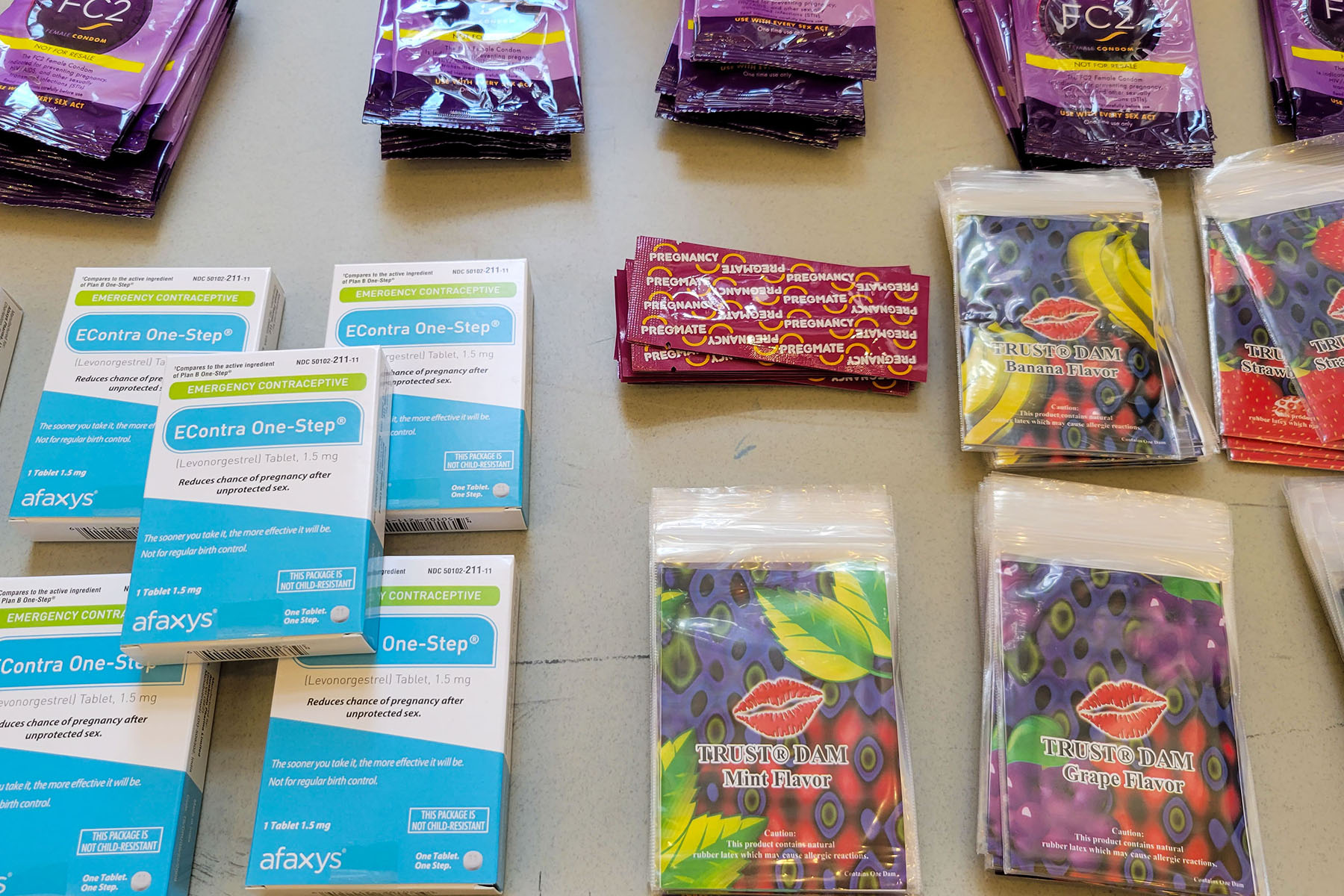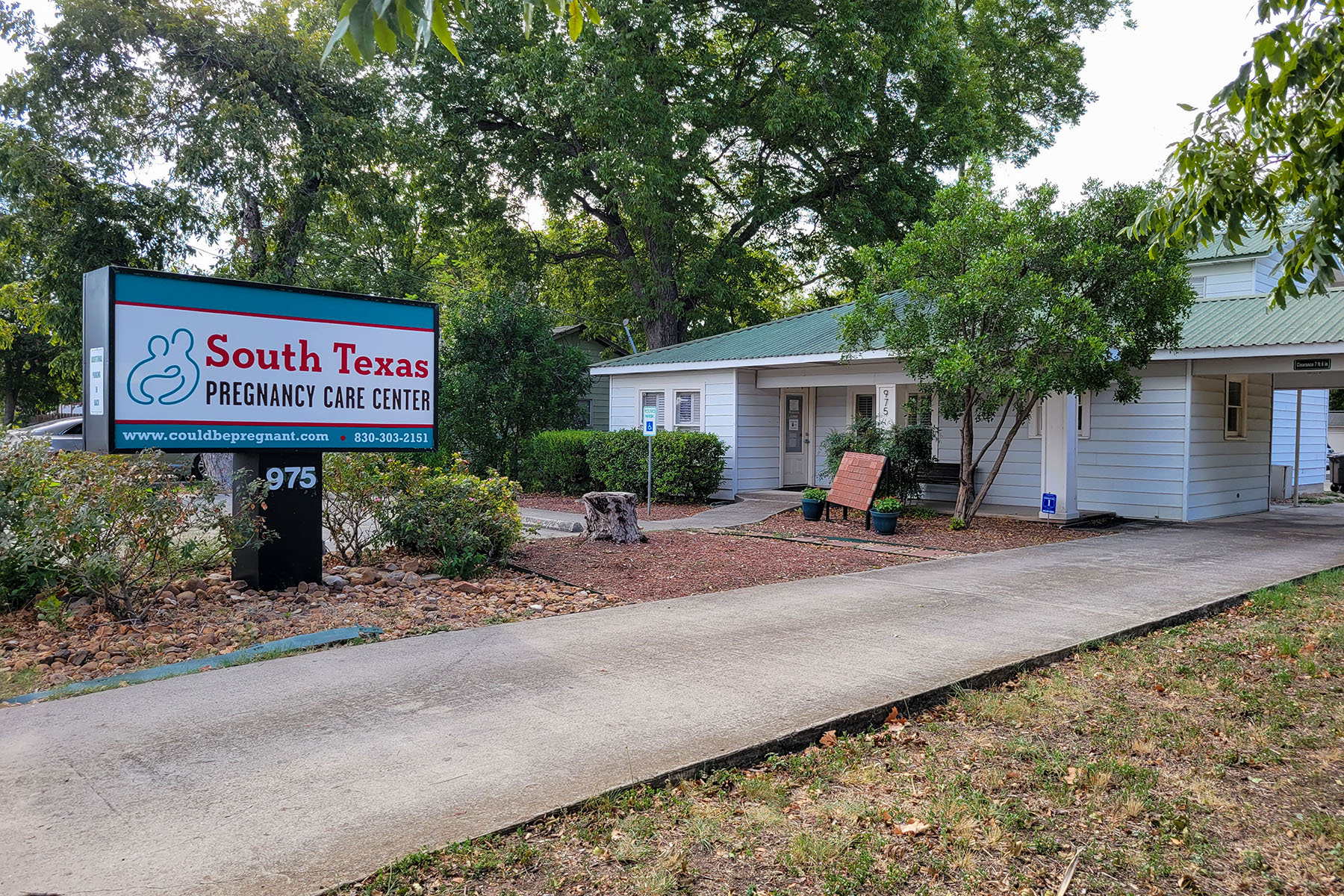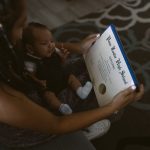When Sarah Anderson travels to Texas middle schools to teach sex education, she brings props: a toy baby to represent unplanned pregnancy, a snake for bacterial infections, a pregnancy test for infertility, a skeleton for AIDS and cancer.
The students are told that if they have sex before marriage, emotional risks include depression, guilt and anxiety. They’re taught that condoms — while often labeled as a method for “safe sex” — do not keep them safe from pregnancy or sometimes-incurable sexually transmitted infections.
Her curriculum for high schoolers, meanwhile, says that people who “go from sex partner to sex partner are causing their brains to mold and gel so that it eventually begins accepting that sexual pattern as normal.” This, the curriculum says, could “interfere with the development of the neurological circuits” needed for a long-term relationship.
Anderson isn’t a school district employee. She works for the South Texas Pregnancy Care Center in Seguin, Texas, a group founded in 2001 to counsel women against getting abortions. The organization is one of dozens of crisis pregnancy centers across the state that send employees into schools to talk to students and, in some cases, teach sex education classes.
These groups, also known as pregnancy resource centers, began to sprout around the country in the late 1960s as states passed laws legalizing abortion. Sex education has sometimes been a feature of their work. But in Texas, which has among the most crisis pregnancy centers of any state and where state health standards dictate that sex education classes emphasize abstinence, those sex ed efforts are particularly widespread. A Hechinger Report investigation identified more than 35 examples of these centers involved in dozens of school districts across Texas, and the actual number is likely higher.
With the Supreme Court overturning Roe v. Wade last summer and the near-total ban on abortion in Texas, crisis pregnancy centers are poised to play an even bigger role going forward. In April, the Texas state legislature approved $200 million over two years for the organizations through its Alternatives to Abortion program (recently rebranded as the Texas Pregnancy and Parenting Support Network), more than double the 2021 budgeted amount. The money funds the groups’ overall work, not just sex ed, but went to at least 14 of the centers identified by Hechinger as working in schools.
The growing school-based work of some centers comes despite scant evidence that the sex ed they provide helps reduce teen pregnancy or sexually transmitted infections. According to public health experts, the approaches many of these groups take — such as emphasizing risks, inundating students with statistics and showing graphic pictures of STIs — aren’t effective in preventing or changing behavior. Instead, they can cause students to stop absorbing information that might help them make informed decisions about sex in the future.
-
Read Next:
“You’ll tend to see that kind of overload on facts [that] steer into fear,” said Leslie Kantor, chair of the Department of Urban-Global Public Health at the Rutgers School of Public Health, in New Jersey. “We know very very well across many many health issues this is not what changes human behavior.”
Staff of crisis pregnancy centers argue that their approach works: Their students report directly to them or in internal surveys that they’ve changed their minds about having sex. Staff also say that their connections with schools grew out of a desire to teach young people how to avoid unplanned pregnancies in the first place, intervening before teens need their services. They say abstinence is the best, most effective way to prevent any risks associated with having sex and that they also teach students about healthy relationships and planning for their futures.
“We deal with unexpected pregnancies,” said Jennifer Shelton, the executive director of Real Options, a pregnancy resource center in Allen, which has taught sex ed in more than a dozen public school districts. “The best way to deal with that is at the beginning of the decision-making process.”
In Texas, sex education typically takes up just a few hours of instruction a year in a handful of grades, and many school districts use outside groups and online providers rather than hiring experts in-house or training their own staff. Sex ed curricula are recommended by councils made up primarily of parents and community members. Many pregnancy center programs, which tend to follow a “sexual risk avoidance” approach that in addition to stressing abstinence also includes discussion of birth control and the signs and symptoms of STIs, are offered for free and align with the Texas state standards requiring that abstinence be promoted as the “preferred choice.”
But some health experts, legislators and students say crisis pregnancy centers, which have been accused of offering women misleading or inaccurate information about abortion risks, have no place in public schools. They view the sex ed courses as a stealth way for the organizations to develop connections to teens so the young people will turn to crisis pregnancy centers if they do become pregnant later.
State representative and former middle school teacher James Talarico has repeatedly introduced legislation to require all Texas districts to teach medically accurate sex education. “I’m concerned that our state is outsourcing sex education to outside groups with extreme political ideologies,” said Talarico, a Democrat who serves north Austin and surrounding areas. “If they are withholding information or emphasizing certain information to push an agenda on our kids, then that’s inappropriate.”
For three years as a student in Lewisville Independent School District, near Dallas, Nimisha Srikanth was taught by staffers of 180 Degrees, the education arm of Real Options.
When she was in eighth grade, the group gave each student a cup and had them pour water back and forth, she said. The exercise was supposed to represent how easily they could become infected with an STI. Srikanth, who graduated from high school in 2019, said the classmates treated it as a joke and purposefully tried to maximize “infections.”
In ninth grade, a lesson quickly derailed when the presenter started talking about how abstinence was best, and someone quipped, “I guess it’s too late for me.” The room erupted in laughter. The teacher “lost everybody’s attention after that,” Srikanth recalled.
Each year, she said, the message was always the same: “Don’t have sex before marriage. If you do, bad things will happen,” Srikanth said. “It’s so much fear-based, very opinion-based.”
180 Degrees is among the state’s most widespread crisis pregnancy center-affiliated sex ed programs, noting on its website that it has sent presenters to 14 districts in the Dallas-Fort Worth area. In 2019, Real Options reached 18,329 students “with education presentations about sexual purity,” according to its federal tax filing.

In an emailed statement, Amanda Brim, the Lewisville district’s chief communications officer, said that 180 Degrees was never adopted districtwide, but individual schools could choose to use the program. In 2022, she wrote, Lewisville adopted a new sex ed program to meet updated state standards, which went into effect that year.
Shelton, who taught for 180 Degrees for many years, said that her program avoids scare tactics, even if some of the statistics they share may be alarming, and that they are truthful with students about the risks associated with having sex. The program, she noted, covers many different topics beyond abstinence, including birth control, STIs and the emotional side to sex and relationships.
Shelton said she believes that “no matter what side” people are on, they should agree abstinence is the best choice to prevent pregnancy and STIs. “We believe in raising the standard for young people,” she said. “They can and most likely will rise to that occasion.”
The sex ed curriculum of 180 Degrees was one of six obtained by The Hechinger Report through public records requests and reviews of school and center websites. All of the pregnancy center curricula emphasize the potential harms of having sex and advocate waiting until marriage, suggesting that doing so will eliminate all risk.
Seventh graders in 180 Degrees classes, according to a presentation for parents, are taught that there are 27 different STIs and that, with their various strains, the total number of sexually transmitted diseases nears 1,000. The curriculum used by South Texas Pregnancy Care Center, called SHARE, lists the potential consequences of STIs as pain and suffering, damage to organs, damage to babies, death, embarrassment and rejection.
-
Read Next:
LifeGuard, the sex ed program affiliated with the crisis pregnancy center The Source, in Austin and Houston, includes a series of graphic photos to give “a medically accurate understanding of how these STIs can impact a person’s health.”
“They just tried to scare us,” said Samuel Ingram, a 2020 graduate of the Leander Independent School District, which says that it has used LifeGuard since 2005. Ingram added that he wished he had been given useful information on safe sex instead of being told “here’s what gonorrhea looks like, and you could have it forever.”
LifeGuard, whose curriculum says that it reaches 15,000 students annually, declined to comment for this article. Staff instructed two school districts not to provide copies of the group’s curriculum in response to Hechinger’s public records request. They also wrote to the attorney general seeking an exemption to the records law on the grounds that release of the material would “cause competitive harm” and that the curriculum contained trade secrets. The exemption was denied.
Alicia Westcot, Leander’s senior director of math, science and humanities, wrote in an email that the district uses LifeGuard because the program follows state health standards and has “created engaging content for our students at all grade levels.” She added that teachers have given positive feedback about having content experts come in to teach the courses.
Four public health experts who reviewed portions of the crisis pregnancy center curricula at the request of The Hechinger Report said the programs frequently fail to provide important context for students to assess the likelihood of various risks and that some parts were biased or misleading, including messaging on contraception effectiveness.
The South Texas Pregnancy Care Center’s SHARE script, for example, instructs educators to tell students that teens don’t use condoms consistently because their brain is not fully developed. A copy of LifeGuard’s eighth grade curriculum instructs the presenter to read quickly through a list of bullet points about correct condom use to emphasize their number and then say, “Are you getting the idea of how consistent and correct use could be challenging?”

While research on the effectiveness of sex ed is difficult to conduct, major medical organizations recommend comprehensive sex education — which typically discusses the benefits of delaying sexual intercourse along with information on methods for preventing pregnancy and STIs, gender identity and consent. They note that studies suggest such courses are more effective than abstinence-only programs at reducing teen pregnancy rates and increasing condom use if young people do choose to have sex, and that comprehensive sex ed produces other benefits, including improved interpersonal skills.
The sexual risk-avoidance approach that many crisis pregnancy centers use covers some content beyond abstinence. But health experts say the programs’ focus on the negative consequences of having sex before marriage echo strict abstinence-only approaches.
They say this focus misses the chance to impart useful information and skills. Rather than presenting statistic after statistic about the ubiquitousness of STIs, for example, educators should make sure students feel equipped to talk with potential partners about protection, said Kantor.
“If I have limited time with a young person, am I going to spend that time giving them a bunch of facts that are not very relevant to them in that moment, that frankly, if they were interested, they could look up on their phone?” Kantor said. Instructors “are making an unfortunate decision to spend precious time with a young person who really needs skills giving out what are probably going to be useless pieces of information.”
In 2020, The Open Door, a crisis pregnancy center in Cisco and Breckenridge, tried something new. Its staff brought a mobile ultrasound unit and a volunteer pregnant woman to a school to perform a live ultrasound in front of students.
Today, the center works with middle and high schoolers in 15 school districts in central Texas, providing education on sex and relationships and in some cases incorporating live ultrasounds into the instruction.
“When we are able to show them a baby moving in the womb, it becomes a lot more tangible,” said Shannon Thompson, The Open Door’s executive director. “This baby has its own heartbeat and fingers and toes and eyes and nose and is already developing a personality. When they can see that, suddenly things are different for them. It has planted a seed of life.”
The live ultrasounds are part of a larger effort led by Thompson to “change the culture” beyond her organization’s walls, she said, rather than simply waiting for clients to come to them. Her staff tries to reach community members before they engage in “risky behavior,” teaching young people to feel empowered to “say no and mean it,” while also introducing her group as a safe place for people to turn to if they do get in trouble or become pregnant.
To that end, The Open Door acquired a curriculum and hired an education liaison to teach sex ed in schools. Staffers have built relationships with school counselors, juvenile departments and camps, and they participate in an annual back-to-school bash. This year, they adopted an additional curriculum to reach more grade levels and added a second education liaison to their staff, Thompson said.
Under her leadership, Open Doors’ state funding is rising: In 2022, it received nearly $380,000 via the Alternatives to Abortion program, compared with approximately $102,000 in 2019.
Thompson said her group doesn’t engage in scare tactics, but rather focuses on “empowering” students to make smart decisions and recognize their self-worth by postponing sex.
“Student education has become a very, very important part of our focus,” Thompson said in April during a panel on her organization’s work at the annual meeting of Heartbeat International, a national network of pregnancy resource centers. “It’s a great way for us to begin to instill and teach and to educate these individuals on the pro-life message.”
Other pregnancy center sex ed programs also use talking points associated with the anti-abortion movement and encourage students to visit their clinics.
The LifeGuard eighth grade curriculum, for instance, includes a game about fetal development in which students guess whether certain developmental milestones — such as the heart starting to beat and the brain beginning to function — occur at four, six or eight weeks.
LifeGuard programs direct students to the affiliated clinic, The Source, if they need pregnancy tests or STI testing. “There are places like The Source that can provide all the information needed to make an informed decision about an unexpected pregnancy,” the curriculum reads.
The Source received nearly $1.4 million in Alternatives to Abortion funding in 2022. Yet LifeGuard describes itself to parents and students as an “apolitical” program that doesn’t take a stance on controversial issues. Indeed, none of the crisis pregnancy center school curricula reviewed by The Hechinger Report contained explicit religious or anti-abortion content.

But the groups do emphasize their religious values in other aspects of their operations, sometimes stipulating that job applicants be Christian and hold certain values. A LifeGuard job ad for a curriculum specialist noted that the new hire must have a “strong commitment and dedication to the sanctity of human life and sexual abstinence.” A job posting for an abstinence educator from 180 Degrees listed the top qualification as: “Pro-Life, Christ follower, and believes that the Bible is the inerrant word of God.”
Shelton of 180 Degrees said that while religion is “very important to us personally,” staff never bring “religious rhetoric” to the classroom or discuss abortion pros and cons, out of respect for students and a recognition that many come from different backgrounds. Similarly, Thompson said her group shares the “pro-life” message as “one option” but doesn’t take a “political stance” in schools.
Speaking at the Heartbeat International conference, Thompson noted that it was, in fact, important for organizations like hers to avoid alienating young people with an anti-abortion, religious message.
“If young women who could be your clients see you waving the pro-life flag loud and proud, remember they could feel like they can’t come to you,” said Thompson. “They are more likely to open up with you when they have a relationship with you, when they feel comfortable with you and feel like they can trust you.”
Talarico, meanwhile, says it’s not enough for organizations to simply say that they are unbiased in the classroom. “There is no public school district in the state of Texas that can legally screen educators based on their political beliefs,” he said. “The fact that these organizations are hand-picking people that align with their extreme ideology should be incredibly concerning.”
The South Texas Pregnancy Care Center assures parents and educators that the religious beliefs that drive the group’s work do not influence its education program, SHARE.
“There is overlap between the message of abstinence from a health standpoint and the message of abstinence from a faith standpoint,” Anderson, the program’s lead teacher, said in a presentation to the Yorktown school district’s School Health Advisory Council, or SHAC, in spring 2022. “But that doesn’t discredit its value as the best message to give young people when it comes to their health,” she added. (Anderson declined interview requests for this story, but wrote in an email that many school districts had vetted and were happy with the SHARE curriculum and that it complied with state health standards.)
Part of Anderson’s job is to travel across central Texas attending SHAC meetings and pitching members, most of whom are district parents, on the advantages of choosing her sex ed program. The councils then make official recommendations to their school boards.
And she’s been successful. South Texas Pregnancy Care Center’s SHARE program started in three schools in 2016; by the 2021-22 school year, two years after Anderson joined, its teachers were presenting in 10 schools.
After the 2022 meeting in Yorktown, she convinced the district to use SHARE, and this year added Seguin to the program’s growing list of districts.
In that school district, Anderson plays an additional role — she serves on the SHAC. In April, at the group’s regular meeting, she encouraged its members to vote to endorse her SHARE curriculum, noting that it was one of just two under the council’s review that aligned with the state health standards. Moments later, council members voted to winnow their choices to those two, and a month later decided to officially recommend Anderson’s program.
The case was one of two identified by The Hechinger Report of a pregnancy center employee who serves on a SHAC voting in favor of her own course, in what Talarico said appeared to be a “clear conflict of interest.” He said he plans to raise the issue with his colleagues to explore whether it needs to be addressed legislatively.
Sean Hoffman, communications officer for the Seguin district, said that there was no evidence that Anderson had undue influence on the decision.

“School districts and school boards have to rely on the pulse of their communities,” he said, adding that it can be difficult to find enough people to serve on SHACs and that the process of evaluating sex ed curricula took more than a year. “When folks come forward and say they want to serve, we’re going to accept them with the knowledge that the intent is to come on and do what’s best.”
Like many pregnancy resource centers, the South Texas Pregnancy Care Center has been expanding its work in the wake of the fall of Roe. This spring, it started construction on a new building, supported, in part, by donations from Seguin nonprofits and agencies. A construction class at Seguin High School is building the interior walls.
Demand for its services is rising too. The center previously averaged around 20 pregnancy tests a month. In January 2023, it administered 41 tests, Janice Weaver, the group’s executive director, said at a city council meeting in February. “There is a big need in Seguin, and we are so excited about the possibility of a new building,” she said.
Other groups, including The Open Door, are starting prenatal care units, to position themselves as a resource for more women who need medical help. Open Door’s Thompson said the group is located in a medical desert, and it will help provide transportation for pregnant women to prenatal appointments and other support. “Abortion basically being outlawed in the state of Texas did not change the circumstances of the women who find themselves pregnant and scared and not knowing what their future looks like,” said Thompson. “If anything, it’s increased the need.”
Molly Davis is a senior at Texas A&M Corpus Christi and president of the college’s Islander Feminists club, which is leading a campaign against a crisis pregnancy center that’s expanding near campus. She said she’s troubled by the growing role of the groups in Texas and sees their work in schools as being of a piece with their larger efforts to persuade people, sometimes through misinformation, to carry pregnancies to term.
“It makes me so angry to see that crisis pregnancy centers are leading sexual education in the state and not healthcare professionals,” said Davis, who has classmates who were taught by the groups. “They are taking advantage of one of the most vulnerable populations we have, which is young people. … They are teaching young people things to specifically lead them down roads they want them to walk down.”
Texas has the ninth-highest teen birth rate of any state, 20.3 births per 1,000 females ages 15 to 19. And while teen birthrates have been falling in the U.S. as a whole since 1991, they remain among the highest in the developed world.
Ingram, the student from Leander, recalls that several of his classmates went on to become pregnant in high school.
“I feel like it was almost a disservice to us,” Ingram, now a senior at Texas A&M Corpus Christi where he is also a member of the Islander Feminists, said of the sex ed he received. “They might have gotten what they wanted and people to practice abstinence, but the people who didn’t weren’t really well-equipped with super good information.”
Srikanth, meanwhile, says she didn’t learn useful information until she got to college at Texas A&M University and joined the campus group FREE (Feminists for Reproductive Equity And Education) Aggies.

On a Monday morning in May, Srikanth spent two hours giving out free condoms, dental dams, pregnancy tests and Plan B in the student center. She assured people stopping by the table that they were in a “no judgment zone,” mindful that some of them likely had also had years of messages that sex was dirty and would give them a disease.
Those middle and high school experiences helped shape her career plans: This fall, she began a master’s program at Yale University and hopes to work in the areas of sexual and reproductive health and justice.
She said, “I want people to have better information than I did growing up.”
This story about sex education curriculum was produced by The Hechinger Report, a nonprofit, independent news organization focused on inequality and innovation in education. Sign up for the Hechinger newsletter.








